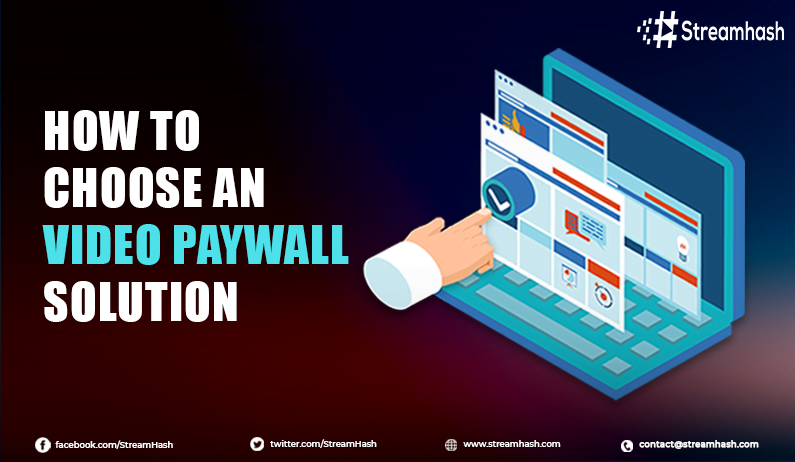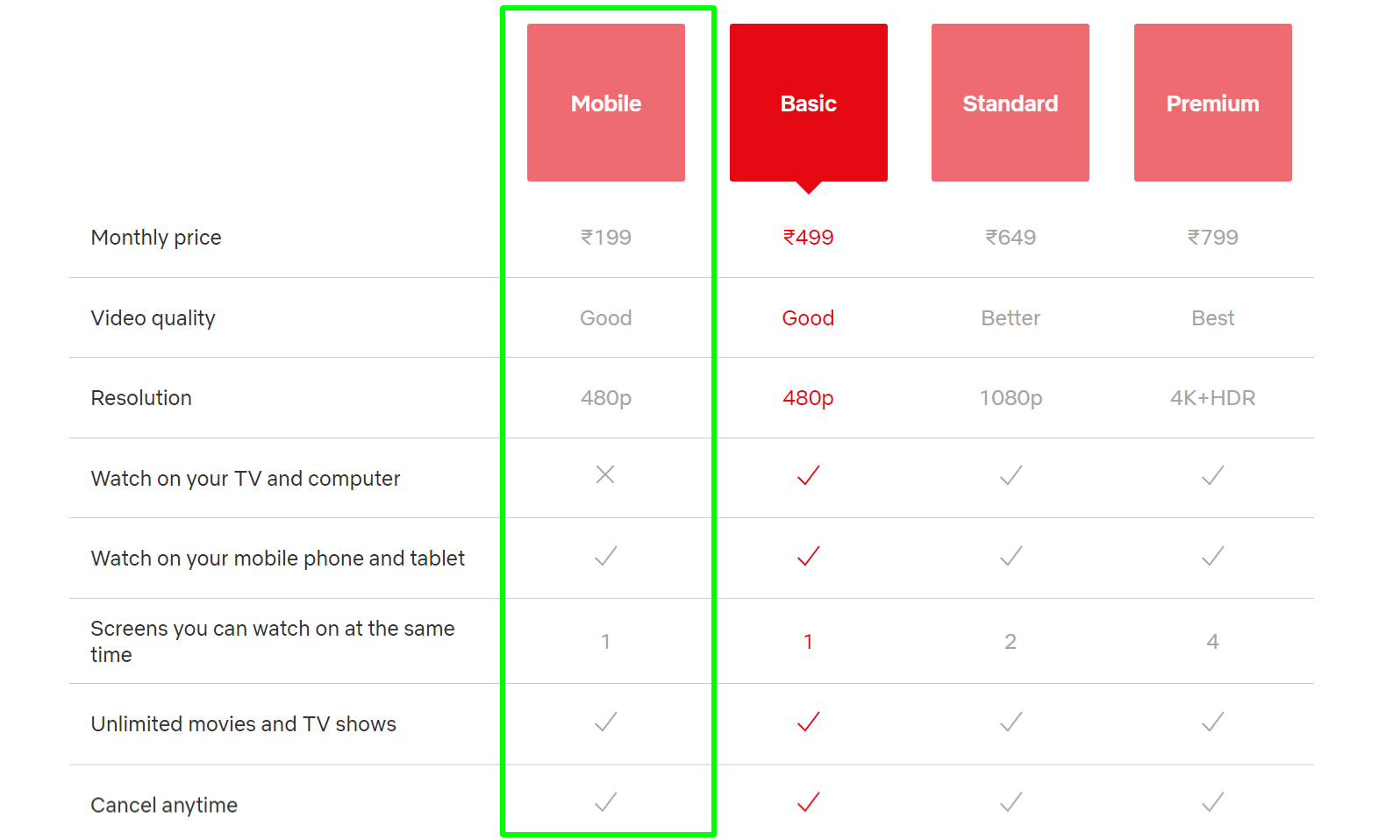According to a MarketsandMarkets study, the global video streaming market is expected to touch the $15 billion mark by 2025, which would be a CAGR of 19.7% comparing it with the current $6.1 billion markets. As per multiple more studies, the factors which are responsible for this include access to mobile devices, improved video quality, OTT exclusive content, and availability of affordable solutions that can be used for building video streaming platforms.
Consequently, we could be seeing a lot of newer video streaming players joining the squad with Netflix, Disney, Hulu, Amazon, HBO, ESPN, Twitch, YouTube, and others.
While some of these platforms offer similar content, not all work on similar business models. For example, Netflix, HBO, and Hulu are purely subscription-based platforms, but YouTube uses advertisements as its major source of revenue.
Clearly, YouTube is the biggest of all since it uses advertisements as a way to offer free streaming services, but the recent years have surprisingly been good to the ad-free platforms. Although advertising is still one of the most common methods of video monetization, and its market size is expected to reach $47 billion by 2023, its popularity among the viewers is not following up the trend.
Even YouTube started offering an ad-free, premium alternative to keep some of its users happy. Not everybody wants to watch Ads before watching a video, hence many choose to rather pay.
Why video monetization is better than Ad-based models?
Video monetization is simply a way to generate revenue from video content one creates and shares online. Ads are also a way to monetize videos, but they don’t actually produce direct results for the content owners.
In fact, out of all the users who choose ads for free streaming capabilities, 40% use ad-blockers to avoid these ads. This translates into losses in millions of dollars to the advertisers and content publishers. Hence more and more content publishers are now moving towards video paywalls for monetization.
Why use Paywall to monetize your content?
Paywalls in general are used by online content publishers to generate direct revenue from their content. If you visit the websites of The Ney York Times or The Washington Post, you can see the pop-ups that ask you to subscribe before you can read anything. It because they have put their content behind a paywall.
Similarly, you can’t access Netflix without paying a subscription fee, which is because it’s also behind a paywall.
Now, there could be different ways to use a paywall and control the way your viewers can watch your content:
• SVOD (Subscription Video on Demand)– Just like Netflix, you could ask your users to subscribe to a membership plan before they can watch your videos.
• TVOD (Transactional Video on Demand)– You could ask your users to pay only for the individual video they want to watch. Just like Amazon Prime’s pay-per-video content.
Having a paywall gives you full control of your revenue model. You can keep your paywall high or low depending on the charges you demand from the users, or you can use a combination of monetization models to target different kinds of users at the same time. For example-
A. Netflix: Although Netflix relies on subscriptions for revenue, it has diversified into different membership plans to target all kinds of users: different levels of benefits at different levels of subscription fees:
In fact, the platform also improvises its pricing strategies depending on the region of operation. If you compare the pricing of Netflix in the US and India, there is a big gap-
While the cheapest plans in the US start at $8.99/month, a plan with the same benefits in India is available at around $6.84 (499 Rupees). Besides, an even cheaper plan is also available for Rupees 199 ($2.7).
B. Amazon Videos: Amazon uses a hybrid of SVOD and TVOD models to generate revenue from not just memberships but also renting and selling of individual content.
C. YouTube: Uses a freemium model that uses everything from Ads to SVOD and TVOD to monetize their platform.
A paywall eliminates your dependence on ads for revenue. The future of revenue generation from videos is indeed shifting towards paywalls. Ads might remain in the game, but only when users who don’t like Ads get the option to avoid them through the premium alternatives. Between 2014 and 2018, the overall sales and rentals of content increased by 30%. In the US alone, the annual TVOD revenue was approximately $1.6 billion in 2020.
The ability to limit the access behind a paywall makes it perfect for selling or renting streaming access to events, music shows, sports, new movies, conferences, documentaries, and a lot more.
How to choose a video paywall for live streaming monetization?
There are mainly three ways to choose a video paywall solution for monetizing your live streams:
1. Using a third-party paywall platform
For now, this option is limited to Patreon users. Patreon has recently introduced the ability to let anyone with a website put up a paywall on it. It means anyone with a website can now use Patreon beyond the boundaries of patreon.com.
You can restrict the access to your website’s content to the users who have signed up to make recurring donations on your Patreon profile. This is the easiest way to implement a paywall on your live streaming website. So, if you already have a live streaming website and looking for a paywall solution, syncing it with your Patreon profile could be the best way to do it.
Pros:
• Easier to implement
• No need to purchase a paywall separately
Cons:
• Available to only WordPress websites at the moment.
• Limited to selected live streaming service providers like Crowdcast.
• You are required to share your revenue with Patreon in return for its services.
2. Using a third-party paywall on your existing live streaming website
Another way to implement a paywall on your existing website is by purchasing the services of dedicated third-party paywall providers. Different paywall providers offer different kinds of benefits and features. Also, not all of them are suitable for live streaming monetization.
Pros:
• Better features than Patreon.
• Better flexibility than Patreon.
• May come inbuilt with Digital Rights Management.
• Support for social media live streaming on Facebook.
• Ready-made plugins for popular CMS platforms
Cons:
• Not all paywalls support your CMS and live streaming platform at the same time.
• Revenue sharing with the paywall provider diminishes your profit margin.
• Might require a dual subscription to paywall and live streaming service.
3. Using a live streaming platform with an integrated Paywall solution
If you don’t already have a live streaming website, or thinking about starting a full-fledged live streaming website with advanced monetization, this is an ideal option. You can choose a turnkey live streaming solution like StreamNow to get everything consolidated on a single platform, without depending on any third-party paywall tool or platform.
StreamNow is a ready-made live streaming solution that solves three problems at once:
• You get a live streaming platform to conduct your stream.
• You get a live streaming website to embed your stream.
• You get an advanced paywall for live stream monetization.
All three solutions, integrated into one makes it easier to not only manage your live streams seamlessly but also share and monetize them without any hassle.
StreamNow supports monetization using both the SVOD and TVOD models.
Pros:
• Advanced control over your business model.
• No revenue-sharing with paywall provider.
• Multiple monetization models.
• Integrated live streaming tool.
• Integrated payment gateways.
• Multi-currency support.
• Source-code access.
• Can be self-hosted.
• 100% white-labeled.
Cons:
• Implementation is trickier than using Patreon Paywall.
• Responsibility for the security of the website on you.
Which video paywall one to choose?
Your selection from the above three options must purely be based on –
• Your current status: Do you already have a live streaming website?
• Your goals: How do you want to monetize your platform?
• Requirements: What features you want?
Irrespective of the types, you must additionally consider the following aspects to get the best out of your chosen method for paywall implementation:
• White-label: You must retain the ability to label your platform with your brand identity. The paywall provider must not put their forced branding on your website, video player, or invoices.
• Security: It should follow a robust architecture to prevent hackers and attackers.
• Different monetization options: It must support multiple monetization channels so you can choose the ones profitable in certain situations.
• Discount management: It must come with a discount management system to offer and manage promotion and sales campaigns.
• Video Preview: It must allow your streamers to offer a free preview to tease viewers into paying for it.
Monetization of your platform is one of the most crucial aspects of running a live streaming business. However, the architecture behind monetized live streaming websites is not always simple. Several integrated solutions work together to make such a platform: website, streaming service provider, paywall, payment solutions, notification services, etc.
Even though I suggest you choose a paywall strictly as per your requirements, budget, and business goals, a consolidated script like StreamNow could be the easiest, cheapest, and most versatile way to get an all-in-one solution to your needs. In a way, you get a ready-made solution for everything you need to run a live streaming business; and no revenue-sharing is required at all.



